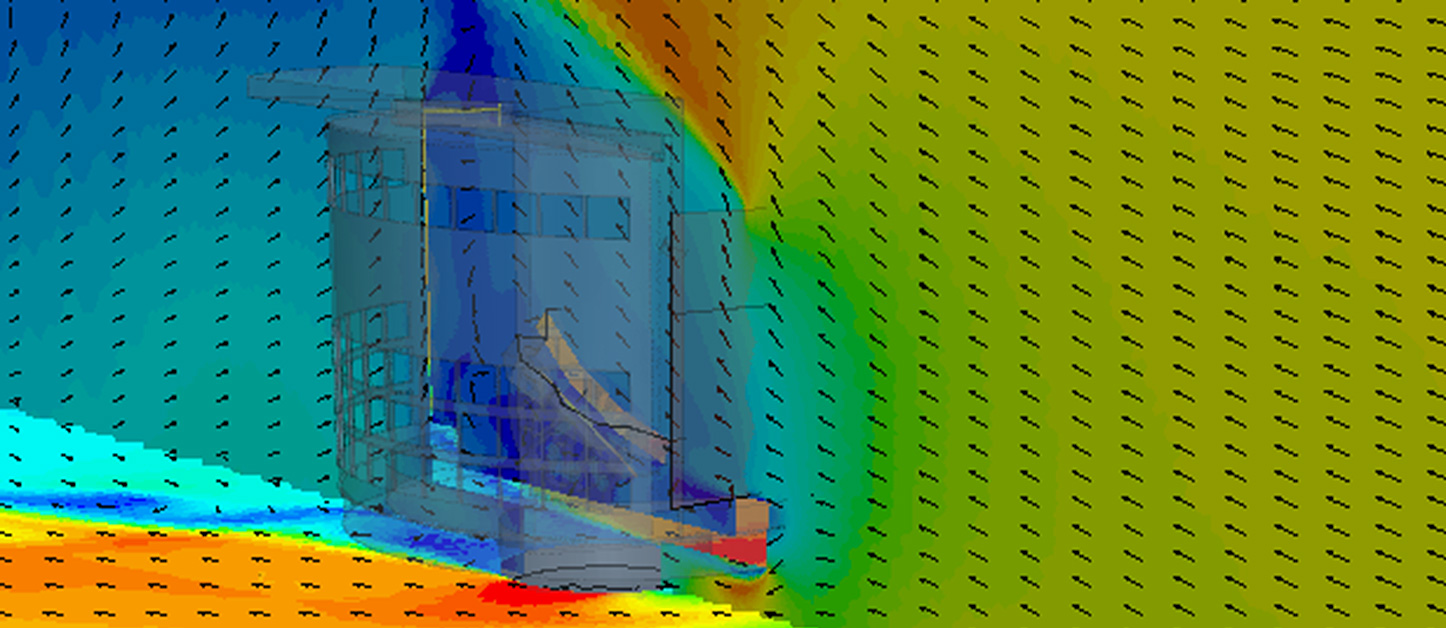Protecting the performance of a groundbreaking telescope
The Giant Magellan Telescope (GMT) will be among the first of a new class of extremely large telescopes (ELTs) whose viewing apertures are more than 20 meters wide. When fully operational in 2021, the GMT will create images ten times sharper than those produced by the Hubble Space Telescope. Because of its exceptional size and power, the GMT will enable scientists to gain insight into some of the most fundamental scientific questions of our time, such as how galaxies first formed, the nature of dark matter, the building blocks of life and the fate of the universe.
Photos


Services provided
The Challenge
The size of the GMT’s aperture makes it exceptionally powerful as a viewing apparatus--and also exceptionally sensitive to effects such as turbulent air flows into its enclosure. The interactions among a telescope, its enclosure and its environment are complex and can have unexpected consequences. Understanding these interactions early can ensure the telescope performs optimally without needing costly modifications late in the design process, or after construction.
Our client, the nonprofit Giant Magellan Telescope Organization (GMTO), was a scientific body with abundant in-house knowledge about the design and operation of sensitive optical equipment. Our work with these fellow scientists was highly collaborative; they engaged us for our specialized wind and weather expertise, and together we undertook an investigation of the environmental effects that would act on the telescope at its proposed site, including thermal gradients, turbulence in incoming air flows and wind forces on the telescope and its enclosure. Although the GMT will have adaptive optics systems to help it mitigate environmental effects, part of our task was to help GMTO identify means of mitigating these effects passively--for instance, by making adaptations to the enclosure design, or adjusting the telescope’s location and orientation.
This investigation was complicated by the fact that the GMT is located in a remote, mountainous area. Such areas, being unpopulated or sparsely populated, tend not to have high-quality historic records of wind conditions. They can also be subject to complex airflow patterns not well represented by the traditional analytic approaches used in typical building design.
Our Approach
The GMT design team sought our help in three areas:
- Understanding how variations in the design of the telescope’s enclosure could mitigate wind effects on the telescope;
- Performing tests to understand the effects of a protective wind screen under various conditions and in various configurations;
- Exploring the site’s natural advantages, such as places where wind speeds were naturally lower. One aspect of this task was to perform analyses to consider two alternate locations for the telescope, each within a few hundred meters of the planned site.
Some key concerns cut across each of these issues of interest. The main one was simply to keep wind effects--anything from wind-induced vibrations to small variations in air density--to a minimum. A second, related, concern was to identify passive ways to prevent air from flowing along the ground and into the telescope’s enclosure; this objective was important because air at grade is more likely to be contaminated with heat and dust and thus more likely to interfere with the instrument’s performance.
Our investigation of wind conditions at the site began with a thorough review of available climate data at the planned telescope locations and at nearby observatories, to understand the local wind microclimate. We augmented this baseline knowledge with large-scale computational fluid dynamics (CFD) simulations to gain insight into how the complex local topography would shape wind flows at the site. We created a very large model with a simulation domain of approximately 166,000,000m3 in volume, and divided this domain into sub-volumes that enabled us to study key locations in greater detail.
Using the intelligence from our CFD modelling, as well as design specifications provided by the GMTO team, we conducted more than 30 different simulations of various designs and orientations of the telescope enclosure and wind screen, as well as simulations for the two possible alternate locations for the telescope. This analysis provided GMTO with a rich understanding of how various choices could temper wind speeds, limit the infiltration of turbulent air and reduce pressures on the telescope’s primary mirrors, all while providing good passive ventilation to disperse the heat generated by the optical equipment.
The Outcome
Our state-of-the-art simulations provided results that the GMT’s designers incorporated into their plans to optimize the telescope’s performance. Specifically, we helped to identify key aerodynamic features of the GMT design and identified potential alternate locations on the site for the telescope at the Las Campanas Observatory. We continue to provide guidance on how to best manage the interaction between the telescope’s enclosure and the local climate conditions in order to provide a consistent, well controlled observation environment for the users of this important instrument. The knowledge gained through scientists’ collaborations on the GMT will also help to inform the design of future ELTs. In the years to come, when scientists use this groundbreaking piece of optical equipment to gain new insight into the dawn of the cosmos and the nature of the universe, we’re proud that they will see more clearly because of RWDI’s insights into the intricacies of wind and weather here on Earth.